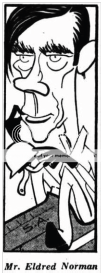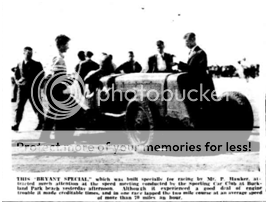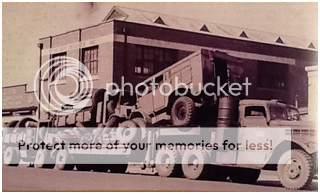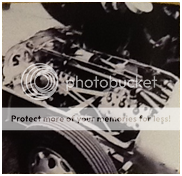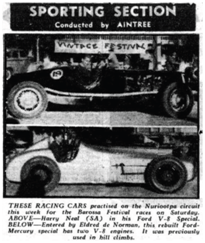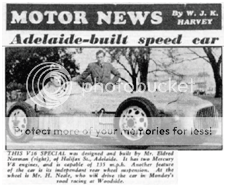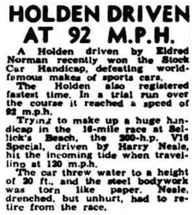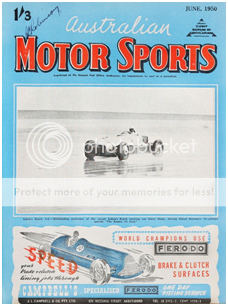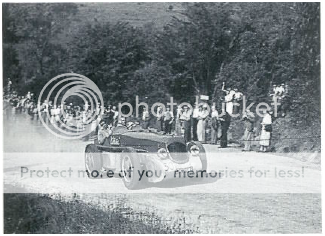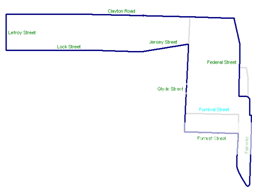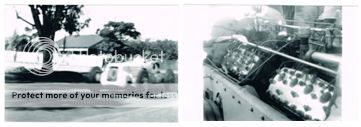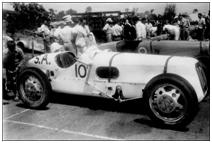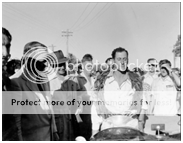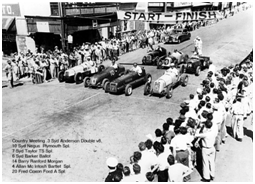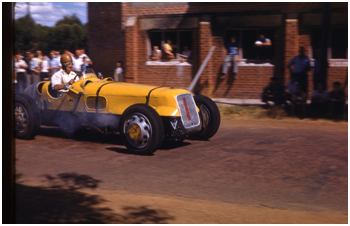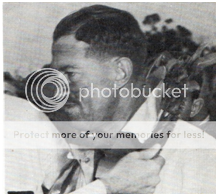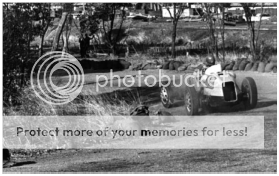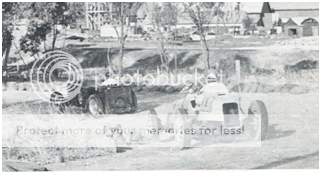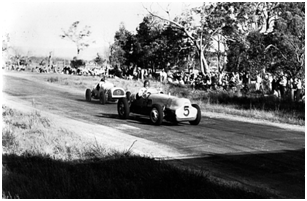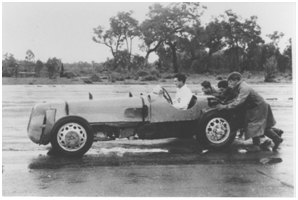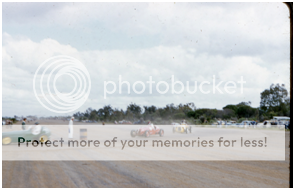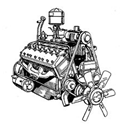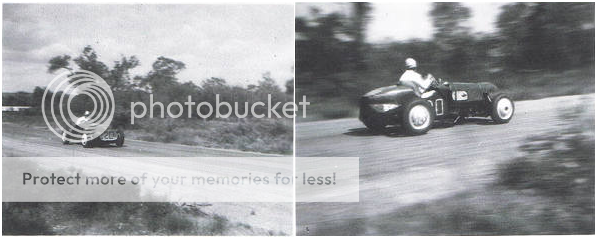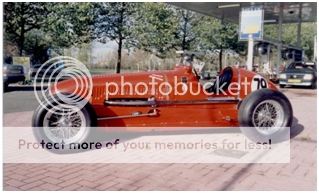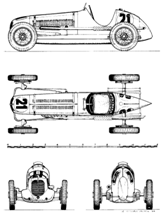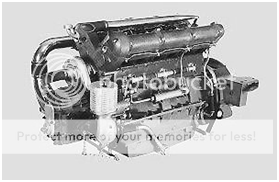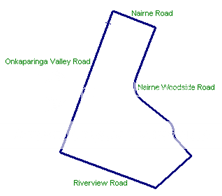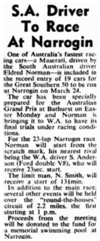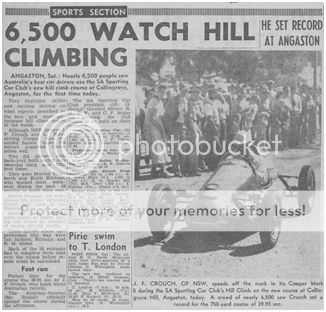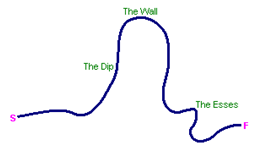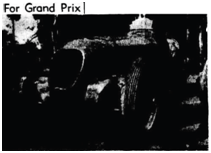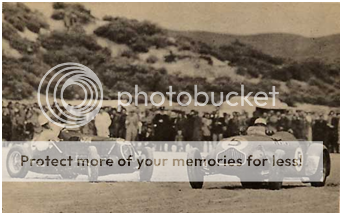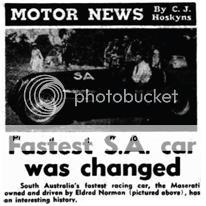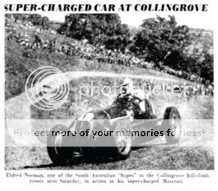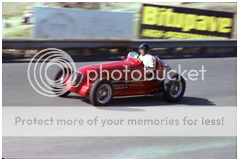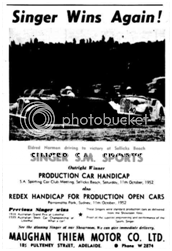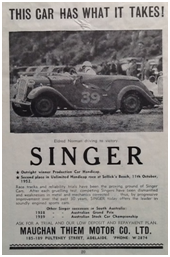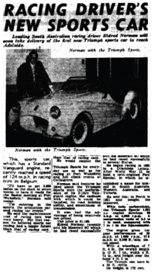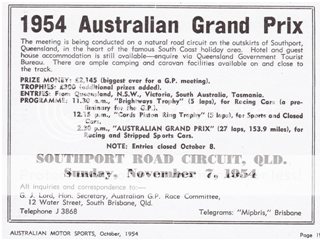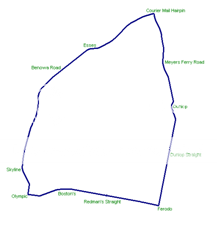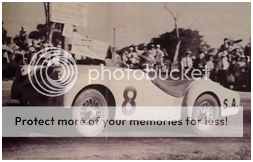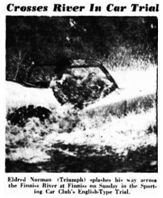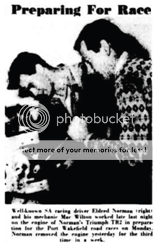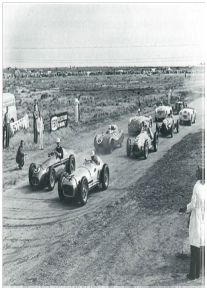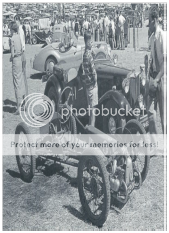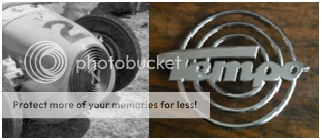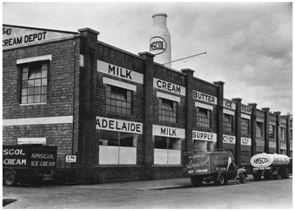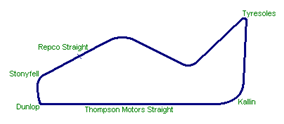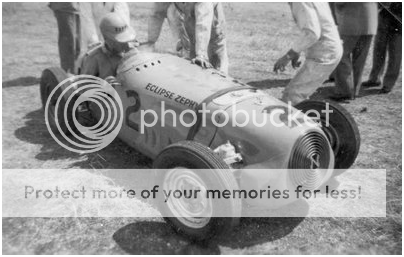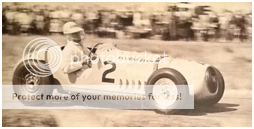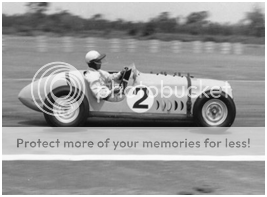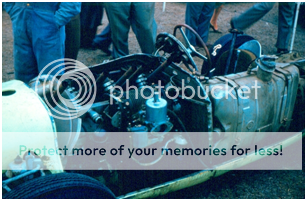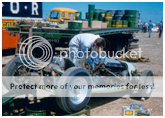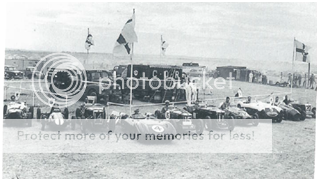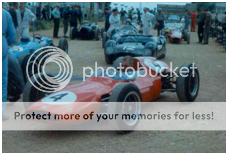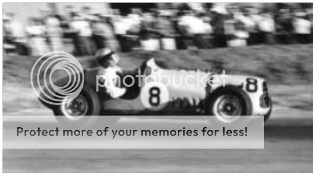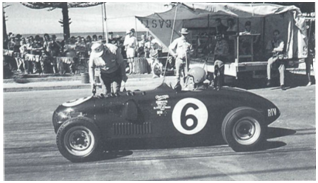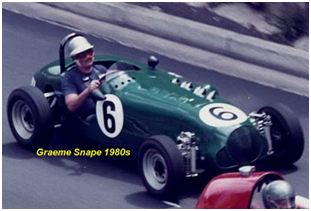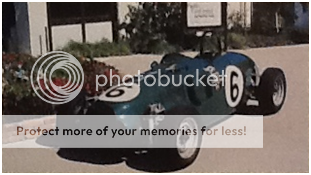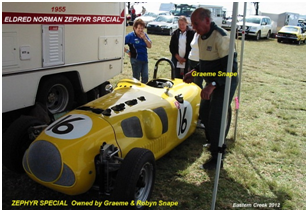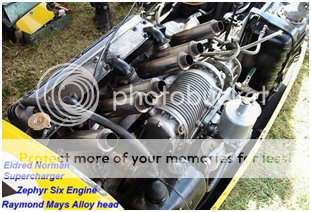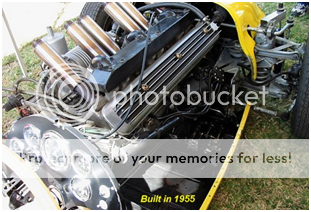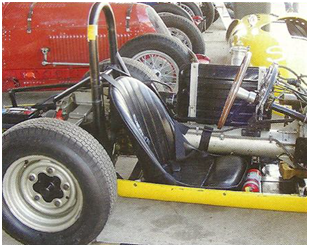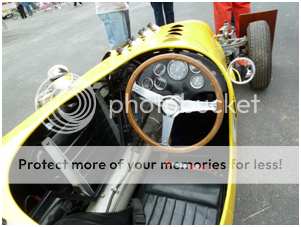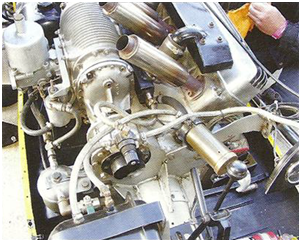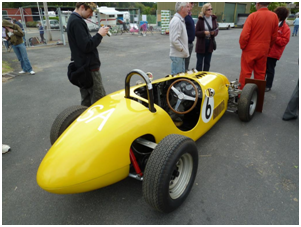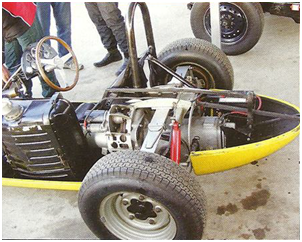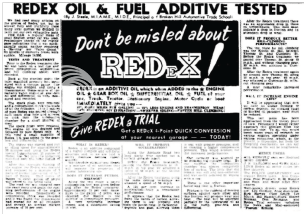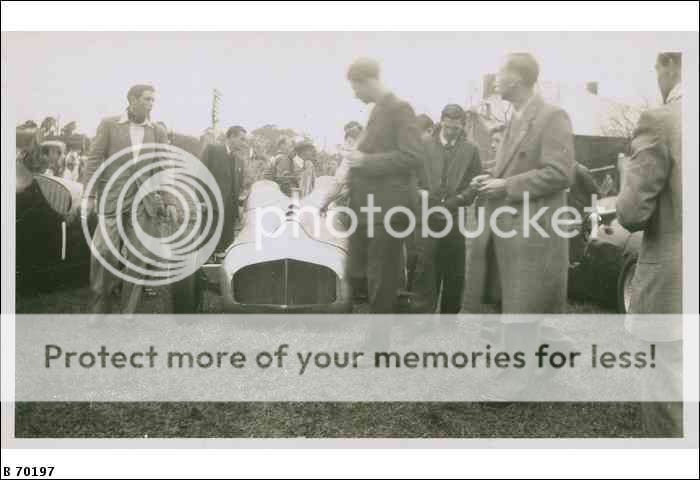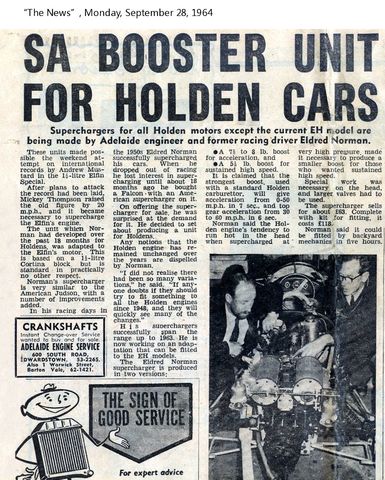10. Post Racing – inventions and travels
After selling the Zephyr in 1956, Eldred abandoned racing to concentrate on inventing. He built a large astronomical telescope in the property’s tin shed, then a rotating observatory in the "plane paddock". The plane paddock had an old twin-engined bomber training aircraft that Eldred had brought back from one of his trips to Papua New Guinea. The Norman children would play in the aircraft, and later cut it up with an axe. Eldred’s sunny observatory, complete with opening roof, became a favourite for Nancy’s writing. A car gearbox was employed to rotate the truck chassis base (mounted to a twenty-tonne block of concrete) to compensate for the earth’s rotation. The telescope operated with both pneumatic and hydraulic components, and had no fewer than twenty electric motors. Scientists from the Weapons Research Establishment (the Commonwealth body engaged in defence research, ammunitions and explosives or weapons industries, based in Salisbury South Australia) would visit to see his home-made automatic telescope mirror-grinding machine complete a cycle, watching as it automatically applied paste, water, rotated, oscillated and separated, grinding mirrors to a tolerance of 0.000003”. Eldred’s 14” cassegrainian telescope (a reflecting telescope that has a paraboloidal primary mirror and a hyperboloidal secondary mirror) is shown in the image above right from Ray’s article, and was later sold to Clive Clisby.
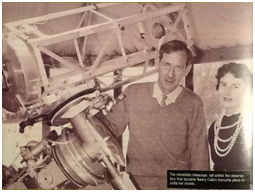
An anecdote related to Eldred’s observatory, Eldred’s fear of spiders and some interesting inventing is related by Ray:
“Steve Tillet once offered Eldred Norman a cigarette, handing him a tin which, when opened, revealed the arachnid. After letting out a scream, Eldred’s reaction was rage. Steve bolted out of the workshop and jumped into his Morris Minor, with Eldred in hot pursuit. A couple of times around the block and Eldred got alongside and pushed him into the gutter. He was about to pummel him when three police officers walked up...
So real was Eldred’s fear of spiders that he went to great lengths to keep them out of the observatory. But then. If anything caught his attention there seemed no limit to the effort he would expend...
A rail of aluminium was installed right around the base on the outside. It was insulated from the building, and located so that any visiting spider had to climb over it. Which was pretty tough, because it carried 2500 volts!”
Many of Eldred’s prototypes, including a car tow-bar and a photographic device to capture burglars, never reached the production stage.
With Nancy, he made a motoring trip in 1961 which took them through seventeen countries, including the Soviet Union, Poland, East Germany, Turkey, Iran and Pakistan. A sign of the times was ASIO’s interest in Communism. There is a one hundred-page file covering Commonwealth Police investigations into the Norman’s activities. ASIO intercepted the Norman’s mail and recorded telephone conversations leading up to their trip. A confidential memo dated April 1961 to Headquarters ASIO from the Regional Director South Australia, indicates that they have nothing known regarding Eldred, but Nancy's name was linked to others (details blacked out in the public report), was present at a public meeting of note, and had signed a petition organised by 'Overland' (a magazine who’s editor was an ex-member of the Communist Party). The Prime Minister Robert Menzies was well known for his anti-Communist views, and was kept informed by memo of the goings and comings of Eldred and Nancy. The trip was undertaken by shipping a 1961 Ford Falcon station wagon to Spain, complete with oversized 50-gallon fuel tank and camp bed in the back. They applied for passports to go to USSR and China in 1961. This request was vetted by ASIO, as part of their 'investigation' of the couple.
On returning from their trip Eldred and Nancy accepted an offer on the “plane paddock”. Whilst the labourers had to break up Eldred’s twenty-tonne concrete foundation, they had few tree stumps to clear… Eldred had done so some time previous with the gelignite noted below.
As Ray notes:
“No longer did the cleaning lady come in twice a week. She had worried Norman, desiring only to get her job done. For him it was a nuisance that she wished to hurry him, his daily reading of the newspaper before coming out to breakfast became a barrier to the smooth passage of her working day. Sometimes she would wash up the breakfast things before he rose, so that he would find the French polished table bare. One morning Eldred put an end to that problem. He got the hammer and put nails into the table to hold the table cloth on! It was not the only time he’d done something seemingly destructive around the house. A pop-up toaster insisted in troubling him, so he threw it on the floor, pumped on it and threw it out the window and over the hedge, where it lay for years.”
11. The Norman Superchargers – father and sons.
Eldred is also renowned for his sliding vane supercharger manufacturing, which started in Adelaide and then continued after the family moved to Noosa in 1966. He is likely to have been influenced by a second-hand incomplete Arnott supercharger he purchased during his ownership of the Maserati. Eldred manufactured eight different superchargers (the Type 65, Type 70, Type 45, Type 75, Type 90, Type 110, Type 265 and Type 270), and adopted some truly innovated designs, including a supercharger clutch drive reminiscent of Mad Max’s car. Eldred’s superchargers ended up on a number of Mike and Bill’s vehicles, including an ex-PMG FE van and Bill’s supercharged MGTC, a winner at Lakeview Hill Climb in October 1965. Eldred’s reflections on supercharging were published in his book Supercharge! published in 1969. The image of Eldred below, taken from Supercharge! shows Eldred in his forties.

Eldred’s habit of road testing race vehicle continued, with his HD Holden utility acting as a test-mule for many of his superchargers. The HD had all drum brakes… interesting to handle given that when fitted with the Type 110 supercharger and Eldred’s own twin-needle 3” SU it could make 140mph. Only seven or eight of Eldreds’ 3” SUs were ever made between around 1969 and 1971. Note that the large SU on the Eclipse Special was not one of Eldred’s, rather it was from a specialty order from the UK. When fitted to a 186ci Holden red motor and Type 110 supercharger Eldred’s 3” SU would only lift around ¾ of its piston travel at 6,000rpm. Barrie Broomhall Motors had the first electric dyno in Queensland and one of the first in Australia. This was a measure of his business acumen and many noted engineers and companies hired his workshop to do development work on their projects. Among the more famous was Eldred Norman doing testing with supercharging.
Eldred’s passion for sliding vane superchargers was taken up by his son Mike. Having been raised on a diet of supercharged vehicles, Mike Norman began building some superchargers from Eldred’s design in 1973-1975. Unfortunately, the original patterns and moulds for Eldred’s superchargers, stored under the house in Noosa, had been lost. From 1978 (through to 1984) Mike ran Offroad Automatics Pty Ltd at Magowar Road in Girraween, Sydney. Whilst the business was involved in fitting automatic transmissions to Range Rovers, Mike began to tinker with superchargers around 1983. Mike manufactured an improved version of the sliding vane design in Sydney the mid 1980’s, making six models (the 150, 200, 250, 300, 350 and 400). Around 1984 Mike was commissioned to supercharge the new four-door Range Rover owned by the managing director of Leyland Australia. This vehicle originally had 9.5:1 compression, and required new low compression pistons to go with the supercharger, manifolds and water injection. All up the project cost around $3500. Bear in mind that a new Range Rover in the UK was selling for around $18,000… This is roughly the equivalent (in today’s money) of buying a 2014 Holden Statesman and supercharging it for $13,000. Mike ceased automatic transmission operations in Girraween in 1985, moving to Noosa. The advent of newer more efficient supercharger type such as the Whipple and Eaton superchargers made for a declining market, and supercharger production was ceased.
Whilst Eldred’s Norman-supercharged HD Holden utility is renowned, Eldred did not actively race superchargers of his own design, instead utilizing Roots, Arnott and Wade superchargers. However, both of Eldred’s sons ran cars with Norman superchargers onboard. Bill started racing at age seventeen in a Standard 10 (shown with Bill in the image below), fitted with a steel-cased Type 65 supercharger.
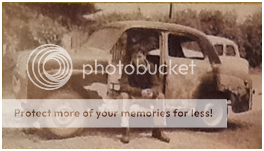
Bill won his first race at Mallala circuit in GT class. After serving a hard life on the track, the Standard 10 was later road-registered by Mike, though did not last too long. After limited success with the Standard 10, Bill then purchased (and later rolled) Steve Tillet's 1947 MGTC. Bill is pictured in the MGTC in the image below.

The standard 1250cc pushrod overhead valve XPAG engine had been fully balanced after fitting a 90-tonne crankshaft. The cylinder head was treated to porting and large valves, and a high overlap camshaft fitted. Bill fitted a steel-cased Type 65 Norman supercharger (seen in the image below), using flexible piping to connect it in suck-through mode. Boost pressure was operated at 10psi, with carburettion was via a 1½” SU.
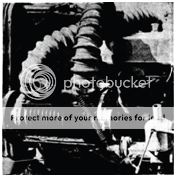
To improve braking the MGTC was fitted with finned brake drums, air scoops on the brake backing plates and competition linings. Handling had been improved by the use of telescopic shock absorbers all round, 15” wheels with wide rims and radial tyres. To reduce weight, the body had a fiberglass tail and an aluminum bonnet, with a Vertex magneto removing the need for a battery. Running methanol, the MGTC’s power had increased from 55bhp to 85bhp (65 bhp at the rear wheels), giving a power-to-weight ratio 5½ times greater than our standard EK Holden.
Bill also owned the front-engine supercharged Ford Cortina engined U2 around late 1968/early 1969. The vehicle had previously been owned by Tony Simmons, who crashed and very badly hurt himself at Oran Park circuit.
Pictured below is Bill Norman’s LC GTR Torana. Bog stock standard, complete with 161ci (2600cc) straight-six and a Norman Type 110 supercharger.
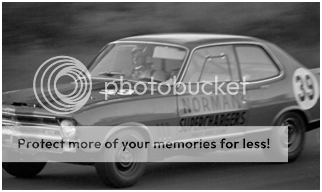
The car had standard brakes, wheels, radials, suspension, exhaust, head and cam, with race preparation limited to a home-made aluminium bonnet and door skins, and the interior gutted. The supercharger never reached its full potential as the relief valve spring lifted constantly (too light). The photo was taken at the Warwick Farm (Sydney) esses during a Sports Sedans practice on the 2nd of May 1970. Bill can be seen thrashing the Torrie at the same meeting in the last few seconds of the 8mm video clip here: http://www.youtube.c...?v=jjgNQy6YIRk. Bill competed at this circuit the following day at the Royal Automobile Club Trophy event in the closed sports sedan race. He was slow off the grid when the supercharger blew back, finishing eleventh after passing a half dozen cars during the ten-lap event.
Whilst Bill was driving the Type 110 Norman supercharged GTR Torana, it still was not quick enough. Eldred’s answer was to build a Hillman Imp with a Buick Fireball aluminum 215ci V8, complete with the Type 270 supercharger and Corvair gearbox. The whole mechanical package was contained in a triangulated frame connected to the chassis by pins for easy removal. The Hillman was test driven for a few yards (snapping the input shaft in the process), though sadly was not completed prior to Eldred becoming ill and passing away. The Type 270 supercharger survived, and is currently owned by Mike Norman. Mike Norman also drove an ex-PMG FE panelvan (repainted from red to grey) with a Type 65 supercharger around 1964-1965, and a 350 supercharger fitted to a 122ci SOHC Triumph Dolomite Sprint (I currently own the supercharger).
12. Other Pursuits
Norman and Nancy pursued a wide variety of interests, including literary. Eldred for example had written a six-article series for the Motoring News section of Adelaide’s News in 1952 (including How Compression Operates). He also tried his hand at writing at this stage, completing (though not publishing) The Memory Beam (an alien story with brain erasing) and Coffins in the Sky. Nancy worked as a journalist and art critic for the Adelaide News, and became a poet and novelist. Her most famous trilogy All The Rivers Run, was published in 1958. The story was adapted to a television mini-series starring Sigrid Thornton and John Waters which ran from 1983 through 1989. Nancy also wrote The Dancing Bough (1957), Time, Flow Softly : a novel of the River Murray (1959), Green Grows the Vine (1960, with a dedication for Eldred), But Still The Stream: a novel of the Murray River (1962), The Sea Ants: and Other Stories (1964), North-West by South (1965), Brown Sugar (1974), Queen Trucanini (1976, with Vivienne Rae Ellis), Nin and the Scribblies (1976), Mister Maloga: Daniel Matthews and his Mission, Murray River, 1864–1902 (1976), The Noosa Story: A Study in Unplanned Development (1979), Forefathers (1983), The Lady Lost in Time (1986), A Distant Island (1988), The Heart of the Continent (1989), River's End (1989, with Leslie McLeay) and Marigold (1992). Her poetry includes The Darkened Window (1950), whilst she also authored the play Travellers Through the Night and edited the Jindyworobak Anthology (1950). Nancy became prominent as a conservationist and Aboriginal Rights activist.
An active member of the Sporting Car Club of South Australia, Eldred often took his children to events, leaving Nancy free to write. During a trip to Darwin Eldred had swapped a bottle of whisky for a .45 caliber sub-machine gun. An earlier purchase of a truck had yielded crates of ammunition. During construction of the Sporting Car Club of South Australia's 0.4-mile hill-climb track at Collingrove in the Barossa Valley, Eldred used the sub-machinegun to hammer soil in around fence posts. Another version of this tale is related by Geoff Berry in With Casual Efficiency. Berry assisted in the construction alongside Eldred, and, indicates that the gun was used to dig holes in order to place gelignite for blowing up stumps and rocks (rather than tamping down fenceposts). For years the case of hundreds of bullets lay open in the shed for the three Norman children to play with, together with a quantity of dynamite which Eldred finally disposed of when it began to weep nitroglycerine. Eldred was one of the foundation directors of Brooklyn Speedway South Australia Ltd, the company which built and operated the Port Wakefield track from early 1953. In 1958 Eldred would gift two hundred and fifty of his shares in the Brooklyn Speedway Company to the Sporting Car Club of South Australia. The image below, taken from With Casual Efficiency, shows (from left) Andy Brown, Gavin Sandford-Morgan and Eldred at the Easter 1963 meeting at Port Wakefield, where Sadnford-Morgan had won the Sports Car scratch race.
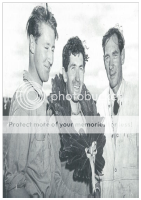
Stories abound of how Eldred outpaced police as he tested cars on the road between his Adelaide workshop and his Hope Valley home. The police would be on his doorstep moments later, looking to nail him for driving an unregistered vehicle. "Oh, no, it hasn't been running at all... not for a couple of days" he would tell them. Feeling the warmth of the engine cover, the police exclaimed that it retained its heat well and departed. Eldred soon learnt that it wasn’t a bad idea to hose down the bodywork after such a run. His tactics were not always successful though, as the clippings from the 11th of May 1938 and 3rd of October 1946 edition of Adelaide’s Advertiser below show.
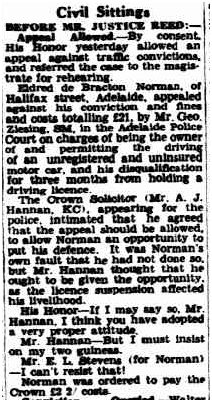
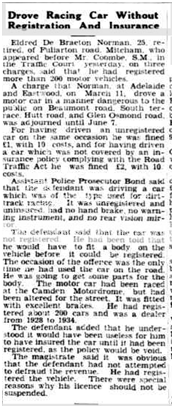
Eldred was also booked for speeding over an intersection (with fines of £1. and 10/ costs in November 1939), and with driving an unregistered car (no penalty, though slugged with 7/6 costs) in August of that year. In one of the incidents above, the Assistant Police Prosecutor noted that “Practically every regulation In the Traffic Act has been broken”. In another incident, when the magistrate shook his head and said, "What will I ever do with you? You come in here so often it’s a waste of the court’s time" he quickly answered back: "Could I have a monthly account?". In 1962 the South Australian Police booked Eldred for low level speeding when he was heading to a race meeting, most likely to watch the first Elfin Formula Junior in action. Eldred was outraged to be caught by the state's first Police radar - he considered it to be unsporting of the Police. He went to enormous trouble in an attempt to prove that the radar was inaccurate. He even went to the extent of obtaining the exact same model of radar unit and spending weeks testing it for potential flaws by attaching strips of reflective alluminium to rotating wheels. When his court day arrived Eldred wheeled the radar unit into the court, to the consternation of the Police prosecutor. The magistrate found the offence proven but did not resort to a conviction, due to Eldred's GOOD DRIVING RECORD!
Eldred’s larrikin nature and engineering practicality are also demonstrated in the following anecdote from Steve Tillet. At a South Australian Sporting Car Club meeting Eldred had been told that Steve’s firm were installing a camshaft grinding machine. Eldred indicated that he had a Holden camshaft, and that as Holden spares were fairly sparse he wanted the camshaft ground. Steve went to Eldred’s Hope Valley home at the appointed time to pick up the camshaft, and Eldred started looking for it. As they walked through the house he noted that Bill, then about three years old, was walking up and down on the piano keyboard. "That kid's got an ear for music," Eldred told him. Finally, with no sign of the camshaft, Eldred called out to Nancy and asked if she'd seen it. "Is that that metal stick with the lumps on it?" she responded. "Yes, that's it," said Eldred. "Okay, I was using it to break those rocks out the front...". Nancy had a pile of rocks she was using for lapidary, so the camshaft was lying covered in dirt in the pile. Eldred picked the lump stick up and handed it to the cam grinder, "A bit more lift and a bit more overlap and they'll never catch me in the trials!" he said.
13. Larrikin Anecdotes
Some other Eldred Norman anecdotes include:
• As a child, Eldred’s father William operated a steam engine at home. The boiler pressure relief valve stuck, allowing the pressure to build to an alarming level. Being frightened to approach the boiler he rushed upstairs, took aim with a rifle and shot off the valve. In a separate incident, Nancy’s .22 rifle was employed during a trip to Fannie Bay (near Darwin, Northern Territory) to hunt a rat. The near dark conditions almost lead to the loss of a toe. Back home, Eldred’s issue of feral cats was solved by use of a length of guttering. The guttering was sealed at both ends and a rifle pointed down the length. Some milk bait and a length of string attached to the trigger led to the demise of many moggies (the exact number being subject to much speculation).
• On one interstate trip, towing a race car on the trailer behind the family Zephyr sedan Eldred proposed to travel with the least number of stops. Just before departing, Eldred purchased 200’ of rubber piping, draping it around the interior of the tow car. He reasoned it would be cold travelling at night, and connected the piping to the cars radiator to act as a heater, as well as to a container under the dash for warming beans. The Falcon car used for the Norman’s overseas trip had been fitted with a similar heater to allow them to stop for a cuppa en-route.
• Eldred’s love of warmed beans was matched for his love of chocolate. Whilst an ice chest was used inside the house, a dedicated kerosene fridge was located outside for the chocolate.
• On another interstate racing trip, Eldred’s packing must have been rushed as he forgot his shoe laces and the collar stud for his good shirt. He showed his ingenuity by arriving at the celebration dinner discreetly using welding wire for his shoes, and a nut and bolt for his collar.
• Eldred’s workshop office air conditioner car radiator fed chilled water from a drum of ice, electric fan. Eldred bough quality cotton handkerchiefs by the carton from David Jones, used them for wiping dipsticks and cleaning sumps then discarded them in a corner.
• When Eldred wanted to better enjoy his home movies, he built a bigger screen… around sixteen feet wide and ten feet tall. The screen was set-up in the front yard, with the projector on the verandah some eighty feet away.
• From Ray’s article:
“His workshop was to become the centre of his activity for some two decades. It was here he became the first person in Australia to put a racing car into series production. This started with a conversation with Steve Tillet, who frequently met Eldred for lunch. Many of Tillet’s stories about Norman commence with “I met him for lunch one day…” and continue with a story that reveals that Steve had to wait around and in doing so noticed things in the vicinity. In this case it was five Morris 8 van rolling chassis at the agents Motors Ltd. “They’d make a nice little racing car” He told Eldred “and the 4.5 diff ratio would be just right”. By 11 that night he had bought them for £200 each, the first chassis had been shortened and he was waiting for Snow Young to come around the next day to build an alloy body. According to Steve, they were quicker than an MG and sold for £450 each. Tillet recalls that David Hopkins bought one and Bill Hayes raced one at Woodside, but the last car was not finished. It had the front axle split and converted to swing axles, the rear end was coil sprung and had trailing links, and it hung around until bought by a certain youngster named Garrie Cooper in 1955. Known as the Cooper Butler (Norm Butler was to buy it and race it), Cooper never called the completed car an Elfin, but it started him on his way.”
Cooper went on to build three Cooper Butler vehicles (not to mention developing Elfin). It is possible that the first one, built from Eldred’s Morris chassis, is shown in sepia below.
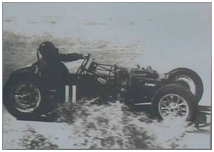
The second (red) Cooper Butler, based on an Austin A40 is also shown.

• Ray also relates the following tale, one that Eldred favoured sharing:
“Like the time he got bogged in Western NSW. Hoping for a passing motorist to help got him nowhere, only one T-model going by while he was there, and it was driven by a farmer with his hat down over his eyes and his pipe upside down. There were however cattle in an adjacent paddock. Cutting the fence, he rounded up one and used fencing wire to hitch it to the car. It wouldn’t budge. More fencing wire was wrapped around one of its horns, then attached to a plug lead. The animal moved, got him out of the bog, and got itself jammed between two trees.”
14. The Passing of Two Legends.
Eldred was sadly taken by lung cancer on the 28th of June 1971 at Noosa Heads. Nancy passed away at Noosa on the 3rd of July 2000. Both Eldred and Nancy were recognised in a number of ways. Nancy, pictured below, was appointed a Member of the Order of Australia (AM) in June 1984 in recognition of services to Australian literature.

The Canberra suburb of Franklin includes Nancy Cato Street. The Jubilee 150 Walkway is a series of one hundred and fifty bronze plaques set into the pavement of North Terrace, Adelaide. It was officially opened in December 1986 as part of the celebrations commemorating the 150th anniversary of the founding of the state of South Australia. The plaques contain the names and deeds of one hundred and seventy people who made major contributions to the founding and development of South Australia. The plaques are arranged in alphabetic order. Eldred’s plaque, shown below is located between the Art Gallery Of South Australia and the University of Adelaide.
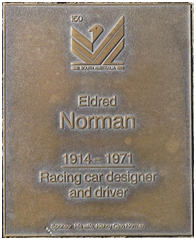
Whilst Eldred was nominated for Life Membership of the Sporting Car Club of South Australia in 1958, this was not granted as he had not been a member for ten unbroken years as per the constitution (his pre-war membership period apparently did not count). In 1963 Eldred financed the club’s trophy for Meritous Service, with the proviso that it was not for achievement in motor sport. The resultant Eldred Norman Perpetual Trophy has been awarded annually ever since.
Cheers,
Harv (deputy apprentice Norman supercharger fiddler).
![]() .
.

